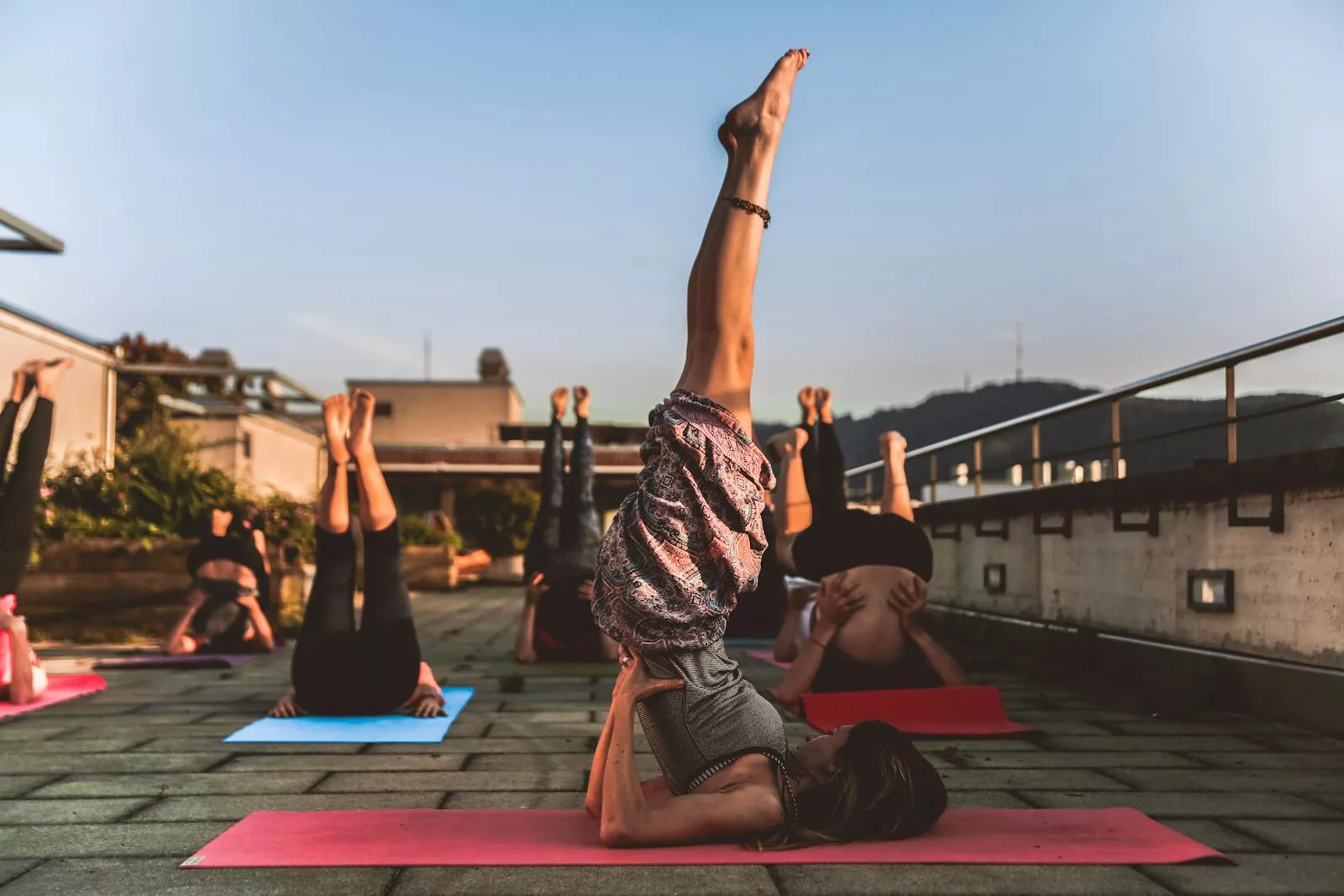Yoga is an ancient practice that has captivated people around the world for its profound impact on the mind, body, and spirit. From busy professionals seeking to release stress to fitness enthusiasts aiming to build more resilient muscles, regular yoga practice can offer transformative benefits. This comprehensive discipline goes beyond poses and breathing techniques; it’s a holistic approach that integrates mindfulness, mobility, and inner awareness. By delving into this timeless tradition, practitioners often find they cultivate a deeper understanding of themselves while boosting their overall well-being.
In many fitness regimens, activities tend to target either cardiovascular fitness or muscle building. Yoga, however, takes a different route by focusing on balance and strength alongside flexibility, mental clarity, and alignment. Whether you’re a beginner experimenting with gentle poses or a seasoned yogi exploring advanced postures, you’ll likely notice improvements that span far beyond the physical. In this article, we will explore 15 key benefits of yoga for enhancing balance and strength, shedding light on why this ancient practice continues to be celebrated in modern wellness circles.
1. Builds Core Stability
Building and maintaining a strong core is crucial, not only for yoga postures but also for everyday movements like walking, bending, or even sitting upright at a desk. Many yoga poses, including Plank and Boat Pose, specifically target the abdominal muscles and lower back. When these muscles are engaged consistently, the body gains a solid foundation, making it easier to hold balances and transition between poses gracefully. A robust core also reduces the likelihood of injuries caused by poor posture or weak abdominal support.
By training the core through yoga, practitioners also foster better spinal alignment, which alleviates pressure on the vertebrae and combats chronic back pain. This emphasis on stability can then spill over into daily life, improving the way you stand, walk, or even carry groceries. The result is an enhanced sense of physical autonomy, helping you feel more in control of your movements and your body’s limits.
2. Improves Posture and Alignment
Few activities underscore the importance of proper posture like yoga does. During a yoga session, instructors often encourage students to lengthen the spine, relax the shoulders down the back, and keep the head in alignment with the torso. This emphasis on alignment is not just an aesthetic pursuit; it helps distribute weight evenly across muscles and joints, reducing strain. Over time, these alignment cues become ingrained habits, improving the way you sit, stand, and carry your body throughout daily activities.
Moreover, poses such as Mountain Pose and Warrior variations remind you of the natural curves in your spine—cervical, thoracic, and lumbar. By maintaining those curves rather than distorting them, you support optimal posture that wards off lower back pain, shoulder tension, and even headaches. Enhanced posture can also lead to improved lung capacity, as the rib cage and diaphragm have more space to expand. In essence, better alignment is a cornerstone of a balanced yoga practice, paving the way for a stronger, healthier, and more comfortable body.
3. Enhances Mind-Body Coordination
Yoga’s emphasis on mindfulness transcends simple stretches and muscle engagement. Every posture in yoga encourages you to synchronize breath with movement, requiring a heightened awareness of how your limbs and core are positioned. This intimate connection between the mind and body improves overall coordination, making activities outside the yoga studio—such as dancing, playing sports, or even climbing stairs—feel more fluid and controlled.
When your mind is consciously engaged in each movement, you learn to detect subtle imbalances or tensions. This deep body intelligence ensures that you respond quickly to correct misalignments or shift your weight appropriately, thereby preventing injuries. Over time, you develop a refined proprioception—the sense of your body’s position in space—and this skill can significantly enhance both static and dynamic balance in various aspects of life.
4. Strengthens Lower Body Muscles
While yoga is celebrated for its core-building capabilities, it’s also highly effective at strengthening the lower body. Many poses, such as Chair Pose, Warrior II, and Goddess Pose, engage the quadriceps, hamstrings, calves, and glutes. Unlike weightlifting exercises that often rely on repetitive, isolated movements, yoga promotes functional strength by engaging multiple muscle groups simultaneously and through different ranges of motion.
This dynamic approach helps stabilize the hips, knees, and ankles, supporting not only the practice itself but also daily tasks like squatting, walking, and climbing. Strengthening the lower body also builds a solid foundation for more advanced yoga poses that challenge balance, including Eagle Pose or one-legged stands like Tree Pose. Over time, this integrated training leads to toned muscles and greater overall leg strength, which is particularly beneficial for runners, hikers, and individuals prone to lower-body injuries.
5. Boosts Upper Body Endurance
While lower-body strength often grabs the spotlight, the upper body also receives significant engagement in yoga. Downward-Facing Dog, Chaturanga, and Crow Pose are just a few examples of postures that challenge the arms, shoulders, chest, and upper back. In these positions, you support your own body weight, effectively creating a natural form of resistance training. This method can be easier on the joints compared to conventional weightlifting, yet it still builds formidable strength and endurance.
Additionally, as you flow from one posture to another, you recruit stabilizer muscles around the shoulders and scapula, areas that are often neglected. Over time, repeated practice bolsters these small yet critical muscle groups, improving posture and preventing shoulder-related injuries. This comprehensive conditioning of the upper body translates to better performance in activities that require arm strength—whether it’s carrying groceries, doing push-ups, or engaging in sports like tennis or swimming.
6. Promotes Better Balance and Stability
Few fitness activities hone balance as intricately as yoga does. Often, classes include standing on one leg or transitioning from high lunge to Warrior III, both of which demand focused concentration and muscular engagement. These postures challenge the proprioceptive system, encouraging the stabilizer muscles around the ankles, knees, and hips to fire more effectively. As your ability to balance improves, your body learns to distribute weight more evenly, reducing the risk of falls or missteps.
Improved balance is not only about standing on one foot; it extends to carrying yourself with poise in everyday situations. From walking up stairs without a handrail to standing in a moving bus, you’ll notice a newfound sense of sure-footedness. This enhanced stability also supports better alignment in seated poses and even fosters more graceful transitions in a vinyasa flow, underscoring just how integral balance is to the holistic yoga experience.
7. Builds Functional Strength
Functional strength refers to the type of strength that translates directly into practical, day-to-day activities. Unlike isolated movements in a gym setting, yoga postures often require complex, compound motions that activate multiple muscle groups in unison. This synchronized engagement replicates the challenges you might face in routine life, like lifting a box, climbing stairs, or picking something up off the floor.
Through regular practice, your body becomes adept at managing various planes of motion and weight shifts. You cultivate a heightened awareness of how to brace your core, position your spine, and engage the right muscles during movement. In effect, yoga trains you to be strong in ways that matter most: ensuring you can handle the movements of life more efficiently and with reduced injury risk. By developing this type of functional strength, you enhance both your athletic pursuits and your everyday mobility.
8. Reduces the Risk of Injury
The integrative nature of yoga fosters a well-balanced muscular system, reducing overcompensation patterns and addressing areas of tightness or weakness. Often in fitness programs, people focus too heavily on either strength or cardio without paying adequate attention to flexibility or mindfulness. Yoga bridges these gaps, promoting joint mobility, core stability, and muscle balance. This synergy significantly decreases the likelihood of strains, sprains, and other exercise-related injuries.
Additionally, the mindful approach cultivated in yoga encourages you to respect your body’s limitations. Rather than pushing through pain or forcing a deeper range of motion prematurely, you learn to tune into subtle cues. Over time, you develop a better understanding of when to intensify a pose and when to ease off, thus preserving the long-term health of your muscles and joints. This self-awareness acts as a safeguard, enabling you to refine your form and protect vulnerable areas throughout your practice.
9. Increases Range of Motion
One of yoga’s most celebrated attributes is enhanced flexibility, which plays a pivotal role in achieving better balance and strength. Many postures work to gently stretch tight areas such as hamstrings, hips, shoulders, and the lower back, all of which can restrict mobility when stiff. By elongating these muscles, you not only improve posture but also pave the way for fluid, more confident movement.
Having a greater range of motion means you can execute tasks—like reaching for an object on a high shelf or bending down to tie your shoes—without strain. Increased flexibility also complements strength training, as pliable muscles are less susceptible to tears or overstretching. Over time, the combination of flexibility and strength fosters a well-rounded physical competence that supports both everyday tasks and more advanced exercises.
10. Develops Mental Focus and Concentration
Beyond the physical realm, yoga is widely acknowledged for its capacity to sharpen mental concentration. Linking breath with movement is at the heart of yoga practice, and this synchronization requires deliberate focus. By tuning in to each inhale and exhale, you cultivate a form of active mindfulness that can reduce mental chatter and heighten awareness of the present moment.
This level of concentration has ripple effects beyond the studio. Improved mental focus enhances work productivity, academic performance, and your ability to remain calm in chaotic environments. Whether you’re balancing in Tree Pose or mastering a challenging sequence, the mental discipline required translates into a steadier mind in daily life. This mental clarity serves as a springboard for better decision-making and a more balanced emotional state, underscoring yoga’s holistic influence on both body and mind.
11. Stabilizes and Strengthens the Spine
The spine forms the structural core of the body, and spinal health often dictates overall well-being. Many yoga sequences emphasize spinal alignment and fluidity, targeting the muscles that support the vertebral column. Poses like Cat-Cow and Bridge gently mobilize the spine, improving circulation in the discs and promoting spinal health. Meanwhile, more advanced backbends and twists encourage a greater range of motion.
When the spine is strong and properly aligned, it’s easier to maintain balance during standing poses or transitional movements. Additionally, a stable spine reduces the stress on the lower back, hips, and shoulders, making everyday tasks more comfortable. This spinal awareness also helps identify any postural imbalances, like a forward head posture or slouched shoulders, allowing you to correct them proactively before they evolve into chronic pain issues.
12. Strengthens the Stabilizer Muscles
While major muscle groups like the quads, hamstrings, and biceps get most of the attention in conventional workouts, yoga pays equal homage to the often-overlooked stabilizer muscles. These smaller, deeper muscle groups maintain integrity in the joints and keep everything in place as you move. For instance, in balancing poses such as Half Moon, your body recruits various stabilizers around the ankles, knees, hips, and shoulders to maintain equilibrium.
Cultivating these muscles lowers the risk of injury, especially in dynamic or unpredictable environments. Stabilizer muscles improve your agility, reduce muscle imbalances, and help you respond swiftly to changes in momentum. This becomes particularly beneficial for athletes who require robust joint support in high-impact sports, as well as for individuals recovering from injuries who need added stability during rehabilitation exercises.
13. Encourages Stress Relief and Relaxation
Yoga is not just about physical postures; it’s also a gateway to stress relief and deep relaxation. Most yoga sessions end with Savasana or another relaxation technique that encourages the mind to let go of tension. Meanwhile, poses that open the chest and hips can release emotional stress stored in these areas, fostering a sense of emotional balance and well-being.
When the mind is calmer, it’s easier to focus on alignment, breath control, and muscular engagement, which in turn optimizes gains in strength and balance. This cycle of relaxation and concentration highlights the interdependence of mental and physical states in yoga. By learning to soothe the nervous system through breathwork and gentle stretches, you create an internal environment more conducive to healing, growth, and peak performance in your daily life.
14. Reinforces Discipline and Consistency
The transformational effects of yoga don’t happen overnight; they stem from consistent, dedicated practice. Showing up on your mat regularly fosters discipline, both mentally and physically. Over time, you become more aware of how skipping a session affects your balance, flexibility, or state of mind, reinforcing the value of a regular routine.
Discipline in yoga also translates into other life areas. The mental perseverance required to hold a challenging pose mirrors the determination needed to meet work deadlines, maintain healthy eating habits, or pursue personal goals. This cross-pollination of willpower and self-awareness creates a powerful habit loop: the more you cultivate discipline in your practice, the easier it becomes to apply that discipline in other domains. Ultimately, yoga acts as a catalyst for personal growth, shaping you into a more resilient and proactive individual.
15. Offers a Lifetime Fitness Approach
Unlike some sports or workout regimes that become difficult to sustain as the body ages, yoga is a lifetime fitness discipline. Its adaptable nature means you can tailor poses and sequences to meet your current capacity, making it accessible whether you’re in your twenties or your seventies. Many variations and modifications ensure that yoga remains challenging yet safe, promoting sustained engagement without risking significant wear and tear on the body.
This longevity factor is crucial for maintaining muscle mass, joint mobility, and mental clarity as you grow older. By consistently practicing yoga, you lay a foundation that supports graceful aging, preserving your ability to balance, move, and think clearly well into later years. Furthermore, the gentle but progressive nature of yoga allows advanced practitioners to continually explore new depths of postures, ensuring that the practice remains both intriguing and rewarding for decades.
Conclusion
Yoga transcends mere exercise to become a holistic life practice that nurtures the body, mind, and spirit. Its carefully designed poses and flows build balance and strength from the inside out, integrating flexibility, alignment, and mindfulness in a single seamless approach. Whether your goal is to run faster, lift heavier, or simply carry yourself more confidently, yoga can be the missing piece that ties your entire wellness journey together.
From core stability and spinal health to functional strength and mental tranquility, the advantages of consistent yoga practice are both wide-ranging and profound. This ancient tradition has survived and thrived for centuries precisely because of its ability to adapt to each practitioner’s needs, providing long-term support for a healthier, more harmonious life. If you’re looking to enhance your physical capabilities while cultivating a deeper sense of internal balance, committing to regular yoga sessions may be one of the most rewarding decisions you’ll ever make.




